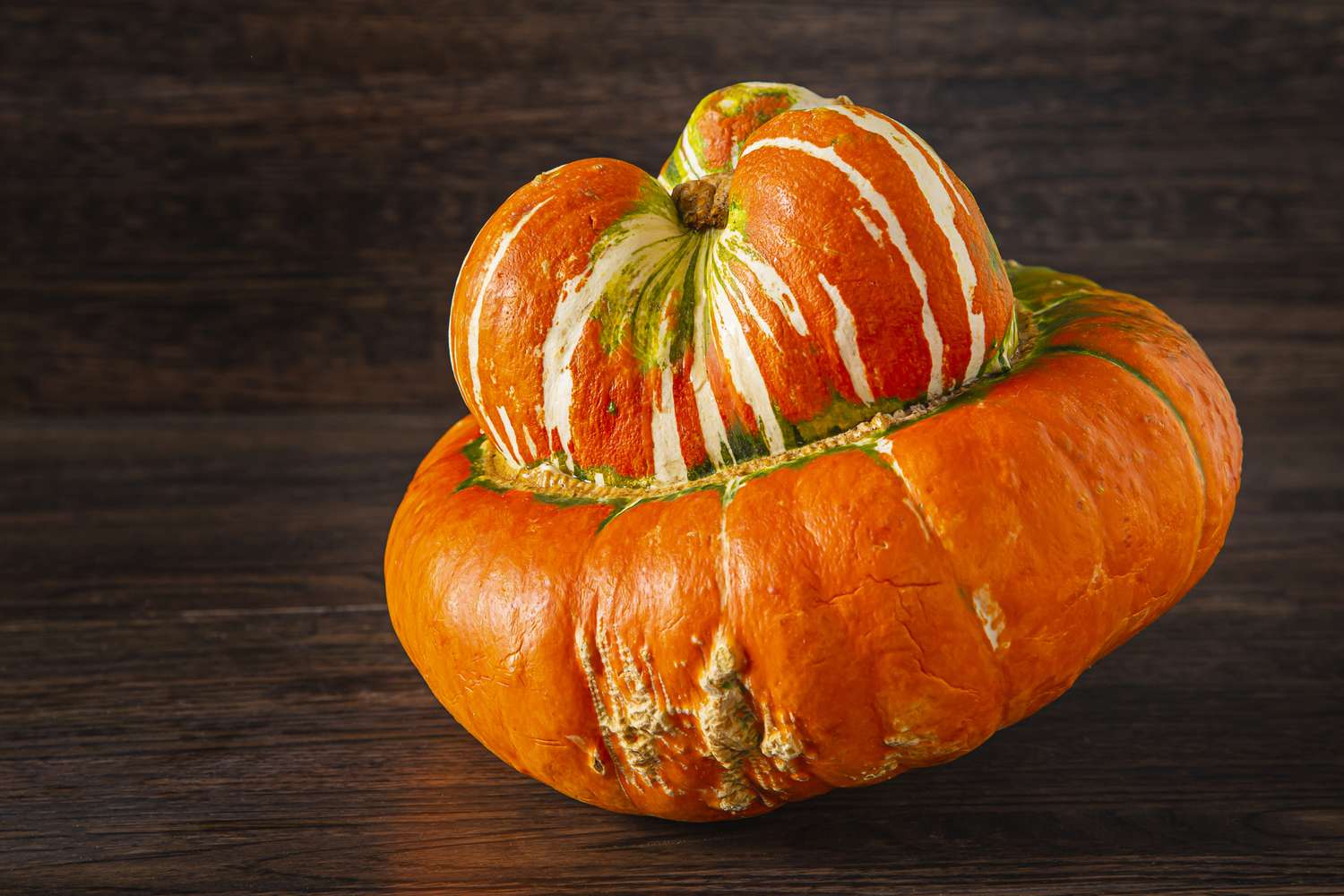
What is turban squash? Turban squash, also known as Turk's Turban, is a unique winter squash with a distinctive shape resembling a turban. This colorful gourd, often orange, green, and white, is not just eye-catching but also delicious. Why should you care about turban squash? It's versatile in the kitchen, perfect for roasting, baking, or even as a decorative centerpiece. Is it nutritious? Absolutely! Turban squash is packed with vitamins A and C, fiber, and antioxidants. How do you cook it? Simple! Cut it open, remove seeds, and roast or steam. Where can you find it? Farmers' markets and specialty grocery stores often carry this seasonal gem. Ready to learn more? Let's dive into 20 fascinating facts about turban squash!
Key Takeaways:
- Turban squash, also known as Turk's Turban, is a visually stunning winter squash packed with vitamins A and C, dietary fiber, and potassium, making it a nutritious and low-calorie addition to your diet.
- This versatile squash can be roasted, pureed, stuffed, or used in baked goods, and it's also a rewarding plant to grow in warm, sunny conditions with well-drained soil and regular watering.
What is Turban Squash?
Turban squash, also known as Turk's Turban, is a type of winter squash that stands out due to its unique shape and vibrant colors. This fascinating vegetable has a lot more to offer than just its looks.
-
Turban squash gets its name from its distinctive shape, which resembles a turban or a hat.
-
This squash is part of the Cucurbitaceae family, which includes pumpkins, cucumbers, and melons.
-
Turban squash can weigh anywhere from 3 to 5 pounds, making it a substantial addition to any meal.
-
The skin of the turban squash can be a mix of green, orange, and white, creating a striking appearance.
Nutritional Benefits of Turban Squash
Beyond its eye-catching appearance, turban squash is packed with nutrients that can benefit your health in various ways.
-
Turban squash is rich in vitamins A and C, which are essential for maintaining healthy skin and a strong immune system.
-
It contains a good amount of dietary fiber, aiding in digestion and helping to keep you full longer.
-
This squash is low in calories, making it a great option for those looking to manage their weight.
-
Turban squash also provides potassium, which is important for heart health and muscle function.
Culinary Uses of Turban Squash
Turban squash isn't just nutritious; it's also incredibly versatile in the kitchen. Here are some ways you can use it in your cooking.
-
You can roast turban squash with a bit of olive oil and your favorite spices for a delicious side dish.
-
The flesh of the turban squash can be pureed to make soups and sauces that are both creamy and flavorful.
-
Turban squash can be stuffed with grains, vegetables, and meats for a hearty and visually appealing main course.
-
Its sweet, nutty flavor makes it a great addition to baked goods like muffins and bread.
Growing Turban Squash
If you're interested in gardening, turban squash can be a rewarding plant to grow. Here are some tips to get you started.
-
Turban squash thrives in warm, sunny conditions and needs plenty of space to spread out.
-
Plant turban squash seeds after the last frost of the season to ensure they have the best chance to grow.
-
This squash requires well-drained soil and regular watering to produce healthy fruits.
-
Harvest turban squash when the skin is hard and the stem starts to dry out, usually in late summer or early fall.
Fun Facts About Turban Squash
Turban squash has some interesting quirks and historical tidbits that make it even more fascinating.
-
Turban squash has been cultivated for centuries and was a popular vegetable among Native American tribes.
-
The unique shape of turban squash makes it a popular choice for autumn decorations and centerpieces.
-
Some people use turban squash as a natural bowl for serving soups and stews, adding a rustic touch to their meals.
-
Despite its tough exterior, turban squash has a tender, flavorful flesh that can be enjoyed in a variety of dishes.
The Final Word on Turban Squash
Turban squash, with its unique shape and vibrant colors, stands out in the world of vegetables. This heirloom variety isn't just a feast for the eyes; it's packed with nutrients like vitamins A and C, fiber, and antioxidants. Its versatility in the kitchen makes it a favorite for soups, stews, and even desserts. Plus, it stores well, meaning you can enjoy its goodness long after harvest.
Growing turban squash can be a rewarding experience. It thrives in warm climates and needs plenty of space to spread out. Regular watering and a bit of patience will yield a bountiful harvest. Whether you're a seasoned gardener or a newbie, adding this squash to your garden can be a delightful adventure.
So, next time you're at the market or planning your garden, give turban squash a try. You won't be disappointed!
Frequently Asked Questions
Was this page helpful?
Our commitment to delivering trustworthy and engaging content is at the heart of what we do. Each fact on our site is contributed by real users like you, bringing a wealth of diverse insights and information. To ensure the highest standards of accuracy and reliability, our dedicated editors meticulously review each submission. This process guarantees that the facts we share are not only fascinating but also credible. Trust in our commitment to quality and authenticity as you explore and learn with us.


